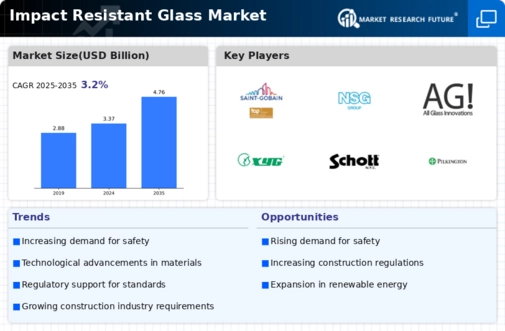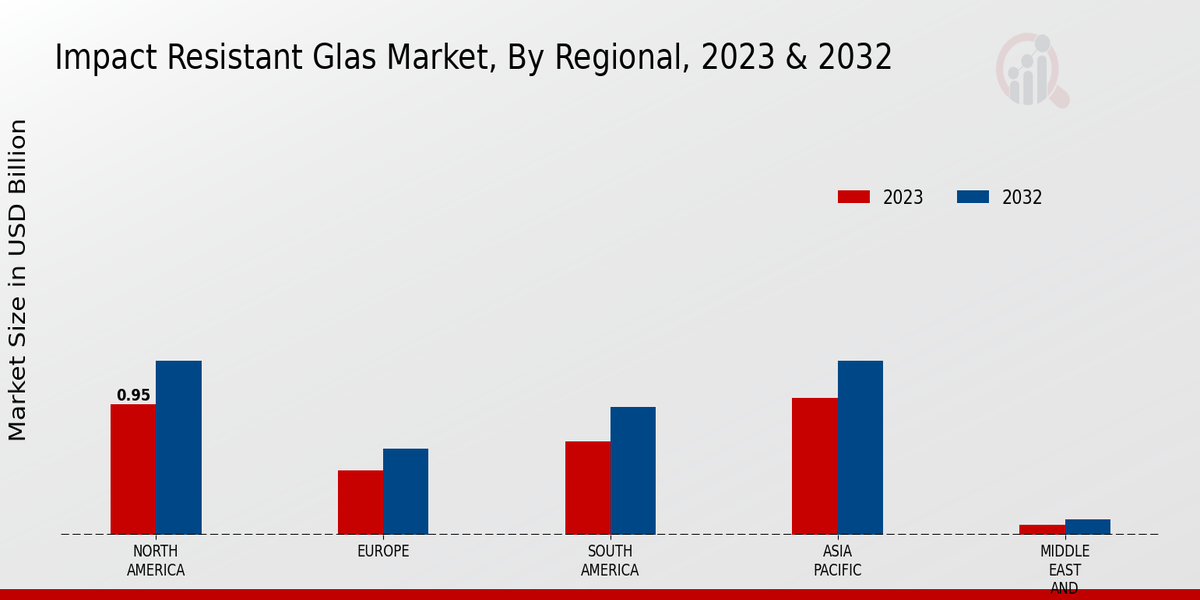Market Growth Projections
Growing Construction Sector
The expansion of the construction sector globally appears to be a primary driver for the Global Impact Resistant Glass Market Industry. With an increasing focus on safety and durability, architects and builders are increasingly incorporating impact resistant glass into residential and commercial projects. This trend is particularly evident in regions experiencing rapid urbanization, where the demand for robust building materials is surging. For instance, the market is projected to reach 3.37 USD Billion in 2024, reflecting a growing recognition of the benefits of impact resistant glass in enhancing structural integrity and occupant safety.
Rising Awareness of Safety Standards
There is a noticeable increase in awareness regarding safety standards across various industries, which seems to be influencing the Global Impact Resistant Glass Market Industry. Regulatory bodies are implementing stricter guidelines for building materials, particularly in areas prone to natural disasters. This heightened awareness is prompting manufacturers to innovate and produce glass that meets these evolving standards. For example, the integration of impact resistant glass in schools and hospitals is becoming more common, as stakeholders prioritize the protection of vulnerable populations. This trend is likely to contribute to the market's growth trajectory, with projections indicating a rise to 4.76 USD Billion by 2035.
Environmental Sustainability Initiatives
The Global Impact Resistant Glass Market Industry is also being influenced by a growing emphasis on environmental sustainability. As consumers and businesses become more environmentally conscious, there is a shift towards materials that are not only durable but also eco-friendly. Impact resistant glass, often made from recyclable materials, aligns with these sustainability goals. This trend is particularly relevant in the construction and automotive sectors, where the use of sustainable materials is increasingly prioritized. As regulations and consumer preferences evolve, the demand for impact resistant glass is likely to increase, supporting the industry's growth in the coming years.
Increasing Demand from Automotive Sector
The automotive sector's growing demand for safety features is emerging as a crucial driver for the Global Impact Resistant Glass Market Industry. With consumers increasingly prioritizing safety in vehicle design, manufacturers are integrating impact resistant glass into windshields and windows. This trend is particularly pronounced in regions with stringent safety regulations, where compliance is essential for market entry. The incorporation of impact resistant glass not only enhances passenger safety but also improves vehicle aesthetics and performance. As the automotive industry continues to evolve, the demand for such innovative materials is expected to rise, further propelling market growth.
Technological Advancements in Glass Manufacturing
Technological advancements in glass manufacturing processes appear to be significantly enhancing the capabilities of impact resistant glass. Innovations such as laminated glass and tempered glass production techniques are improving the strength and resilience of glass products. These advancements not only enhance the performance of impact resistant glass but also reduce production costs, making it more accessible to a broader range of consumers. As a result, the Global Impact Resistant Glass Market Industry is likely to benefit from increased adoption across various applications, including automotive and architectural sectors. This trend could support a compound annual growth rate of 3.18% from 2025 to 2035.




















